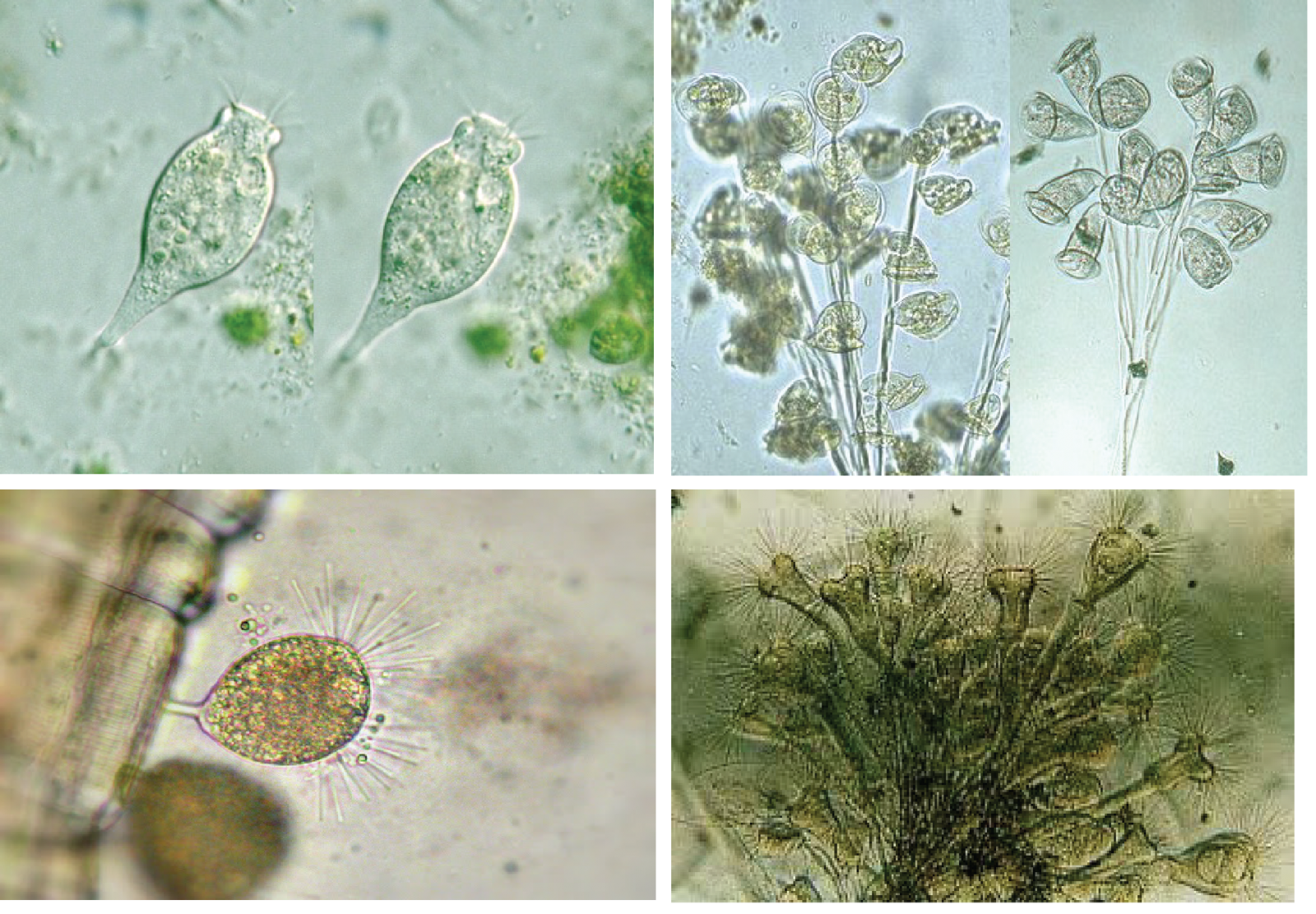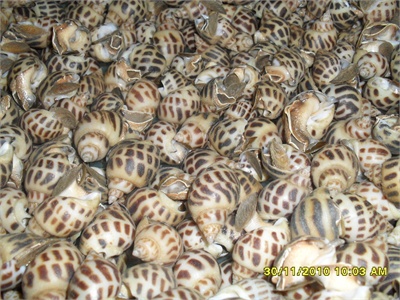HERPES OF LILIES
Snails are protein-rich aquatic species, have economic value and are highly adapted to the climatic conditions of our country. Currently, there are many popular species of snails such as snails, fat snails, stuffed snails, and elegant snails. Snails are the main or intermediate hosts for many types of fluke diseases, unicellular parasites plus relatively weak resistance, so there are many common diseases in snails.
Lilacs (Apiosoma, Vorticella, Ambiphyra, Epistylis, Zoothamnium …): A single-celled animal, living alone or gathered in a conglomerate. Lilacs are usually harmless to the host until their density is large enough.

Apiosoma and Ambiphyra lilies attach themselves to the skin or gills of fish or reptile hosts. Apiosoma is usually bell-shaped (30 × 50 μm) and hairy on the bell-mouth side (Fig. 1b), has a large circular nucleus, often lives singly rather than conglomerate. Ambiphyra spp. is also lilac-shaped but has a ring of vibrating feathers in the middle of the body. Symbiotic lifestyle with snails, crabs, shrimp, fish … They take food not from the host, but from organic matter suspended in the water. Both are generally considered harmless symbionts, however, in large quantities can cause inflammation, increased viscous secretion, proliferation, necrosis and eventually sores on the skin and destruction of the gill tissue.
Epistylis and Zoothamnium live in conglomerates. Epistylis are obligate parasites while Zoothamnium mostly live freely close to the substrate and are opportunistic parasites. Both species cling to peduncles (possibly longer than 1 mm), Zoothamnium has retractable peduncles while Epistylis‘ peduncles do not shrink. Once attached to the host, a worm will divide and spread to create large corporations. When present in large corporations, areas of overlap can be damaged leading to swelling, necrosis and eventually sores – commonly known as “red spot disease”. Vulnerable areas will be vulnerable to attack by secondary pathogens.
Causes disease in snails: Most often in the egg and larval stages. There are two common species, Vorticella and Zoothamnium, which are often associated in living conglomerates clinging to snail shells, injecting capillaries and snail larvae.

Snails are susceptible to fluctuations in pH, alkalis and chemicals. Very few chemicals are suitable for limiting the growth of Lilacies on snails. Among them, Nano Silver and Nano Copper groups with copper content of 2g / 1000ml are effective in handling and ensuring safety for domestic snails.
Pathogenicity in shrimp: It clings to the shell, gills, and subsets of shrimp, destroying gill cell organization, causing gill silk to tear, injuring the subset, interfering with respiration and growth, weakening shrimp, enabling other opportunistic agents to penetrate and cause disease.
To treat coincidences in shrimp, prevention should be taken from the treatment of water at the beginning of the season with Biocutea or Nano Silver Copper. In the case of periodic farming Biocutea or Nano Silver Copper to prevent the growth of Lilacs into shrimp gills.
CONTACT US: 0392.045.736 or 0855.511.477
EXPERT PHONE: 0969.500.024
